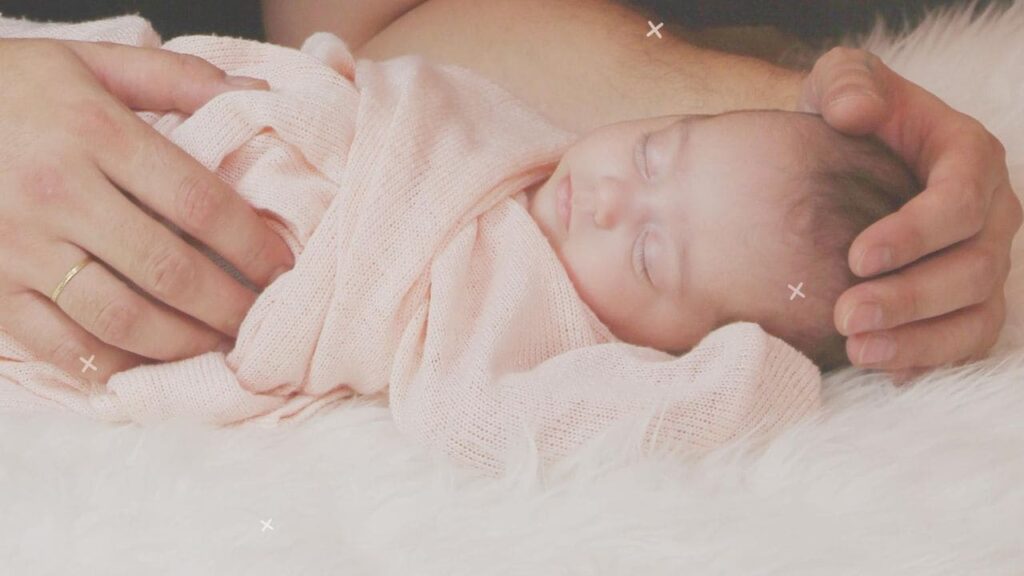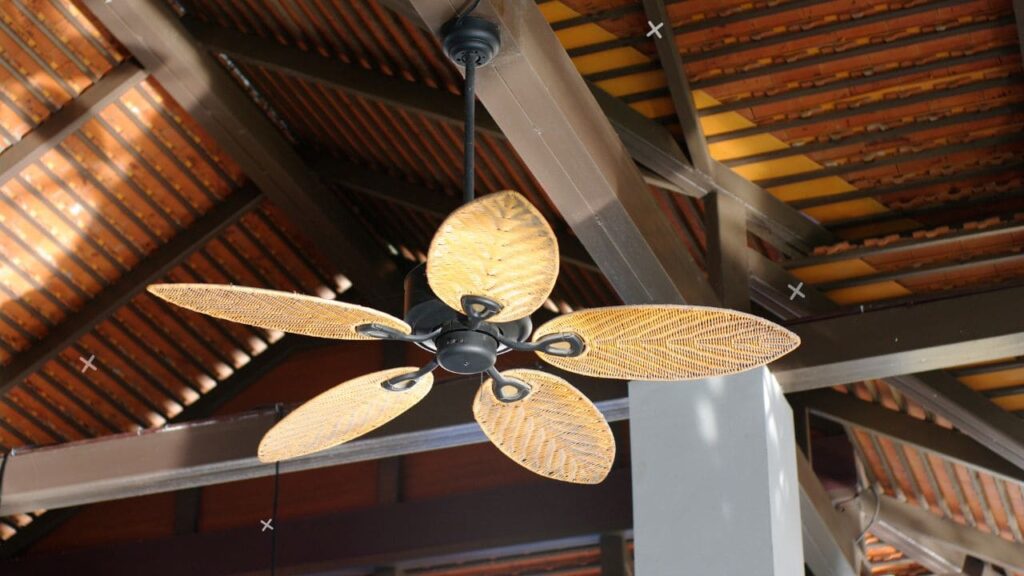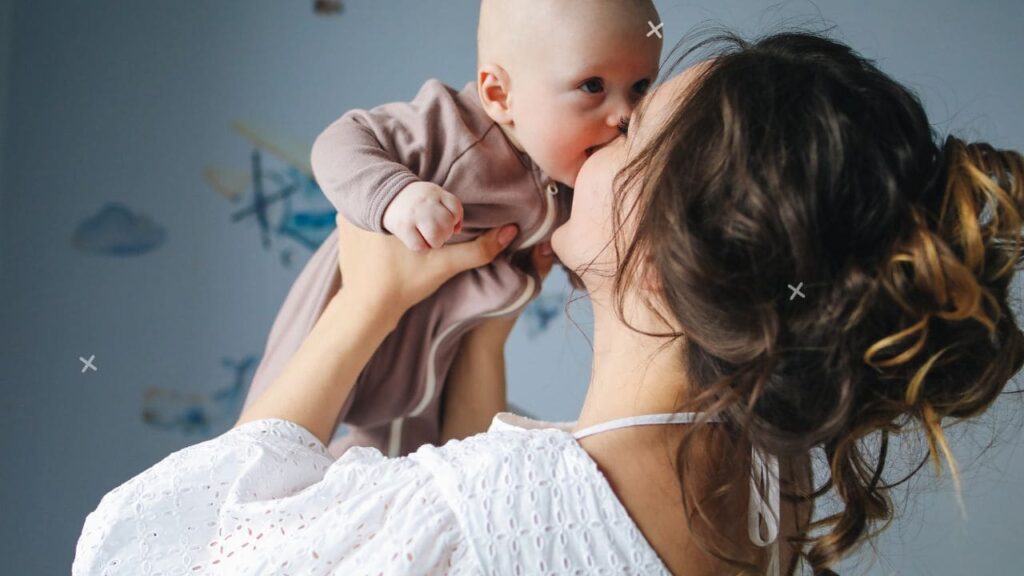As a parent of a newborn, I certainly understand the constant worries about your little one’s newborn sleep environment and baby room comfort. It’s so easy to spiral down an overwhelming trail of “what if’s” and scary internet searches about ceiling fan safety standards for your delicate infant sleep environment. Believe me, I’ve stayed up for countless nights wondering things like: will a ceiling fan actually make my fragile newborn sick?
And if you’ve landed on this post with the same baby health precautions questions in mind, I’m guessing you’ve agonized over whether ceiling fans could jeopardize your infant well-being.
Well, take a deep breath with me. I’m here to walk you through a comprehensive guide examining will ceiling fan make newborn sick. My goal is to ease your worries while also making sure you have all the preventative newborn safety tips needed as you welcome your bundles of joy home.
Will Ceiling Fans Make Newborns Sick?
The short answer is, not usually, if used properly with some baby room ventilation adjustments.
Ceiling fans work by circulating the air to create a cooling breeze. This intentional nursery airflow can impact newborn health, but there are also plenty of indoor fan benefits. So it’s all about finding that optimal balance between fan speed and room climate.
Here are key factors determining whether ceiling fan usage might make your little one sick:
Newborn Age
Brand new newborns have extremely sensitive immune systems, just like their skin. Their bodies are still learning how to self-regulate body temperature and fend off germs or environmental irritants.
So babies younger than 3 months will need the most cautious ceiling fan usage. The good news is that quickly babies’ resilience against air drafts or temp changes grows.
Fan Settings and Speed
Rather than the mere presence of a nursery ceiling fan, it’s the fan speed RPM and resulting airflow that has the biggest impact. Most pediatricians caution against the highest ceiling fan settings for baby rooms since this can create more air circulation than their little bodies can handle while regulating newborn body temperature.
The risks here include possible temperature regulation issues or catching a chill. We’ll cover the recommended optimal fan speed coming up.

Room Temperature and General Airflow
Speaking of temperature regulation, finding the right balance between a ceiling fan breeze and actual room temperature is key. Keeping climate control in a healthy baby-safe temperature range is crucial for newborn sleep. Having proper airflow from windows or air conditioning is also a factor. Sometimes an existing breeze is plenty without adding another indoor fan. Pay attention to if and when baby seems uncomfortable with the ventilation.
Preexisting Health Conditions
Any respiratory issues or immunity deficiencies could increase a newborn’s sensitivity to moving ceiling fan air. So openly communicating with your pediatrician is a must if baby has any special health considerations. Create a sleep environment and ceiling fan approach tailored to their needs.
What Illnesses Could Develop From Improper Fan Use?
While most parents use ceiling fans safely, it’s good to understand possible health risks pediatricians described to keep watch for if misusing a fan:
- Chills or temperature regulation issues: Newborns can’t regulate body heatwell yet, so improper airflow chilling could cause baby to get sick. Watch for signs of discomfort.
- Allergies or irritation: Dust or pollen circulating plus dry air could aggravate allergies, skin, nostrils, or eyes.
- Congestion: Getting hit with blasts of air flow could make it easier to catch head colds. Monitor for coughs, sneezing , or stuffy nose.
- Ear infections: Excess fan air blowing into ears can lead to newborn ear infection susceptibility. Be mindful of fan direction.
So while the nursery ceiling fan itself won’t directly make your infant ill if following all doctors’ safety tips, improper usage allowing the above issues could negatively impact health. Later we’ll cover exactly how to prevent those outcomes.
Setting Your Nursery Ceiling Fan Correctly for Newborns
Here’s the proper way to balance ceiling fan usage for your baby’s health:
Appropriate Fan Speed for Nursery
Medical professionals strongly advise against using the highest speed settings for your delicate newborn when selecting a ceiling fan. The fastest ceiling fan RPM options simply move too much air volume and could exceed what their bodies can handle while trying to properly regulate newborn body temperature.
Instead, keep your nursery fan speed on the lowest or medium settings, ideally between 150-200 RPM. This should provide a light, gentle breeze suitable for an infant sleep environment.
As a general rule of thumb for balancing a quality newborn sleep environment:
- Low setting (150 RPM) – safe for kids 0-3 months
- Low to medium setting (175 RPM) – appropriate for babies 3-6 months
- Medium setting (200 RPM) – suitable for infants 6+ months

Ideal Room Temperature for Nursery
Work on finding the right correlation between your set ceiling fan speed and nursery room temperature. Keeping climate control in a healthy baby-safe temperature range is crucial.
Here are the medical recommendations:
- 68-72 degrees F – The ideal nursery temperature for a newborn is right in this range depending on various factors like ceiling fan use and baby’s clothing layers.
- 75 degrees F (Max) – Don’t exceed 75 degrees max. Any hotter could be dangerous for an infant even with a cooling indoor fan breeze.
- 65-70 degrees F – If also using air conditioning or open windows along with a ceiling fan in the baby room, aim for this reduced temp range instead so baby doesn’t get too chilly.
Get in the habit of frequently checking baby’s chest to see if they feel hot, cold, or clammy which signals discomfort. And adjust the thermostat or add/reduce blanket layers accordingly depending on the ceiling fan speed. Stay vigilantly watchful of your indoor fan use!
Additional Safety Precautions Around Nursery Fans
Here are additional nursery ceiling fan tips for keeping your delicate baby safe and healthy:
Crib Positioning in Nursery
Be very mindful of directly where you place the crib in relation to the room’s ceiling fan during installation:
- No closer than 3 feet away from the nearest moving ceiling fan blade. Any nearer could cause excess direct airflow on infants.
- Not directly centered under the ceiling fan since that is where the most air circulates. Set the crib completely to the side away from the ventilation path.
- Ceilings fans should spin clockwise which helps reduce downdrafts. Make sure the crib isn’t located where shifting ceiling fan air will keep hitting baby.
Monitor for Signs of Illness Development
While the ceiling fan may be set correctly, still monitor your newborn very closely for any signs of developing illness just to be safe using some baby room adjustments:
- Changes in body temperature – skin feels too hot or cold signaling issues regulating newborn body temperature
- Excess sneezing, coughing, or stuffy nose
- Increased mucus or watering eyes
- Ear tugging or redness
Don’t hesitate to turn off the ceiling fan and call your pediatrician if baby seems uncomfortable. Remember newborns sleep 14-17 hours a day on average, so take safety precautions very seriously for their newborn sleep environment!
Alternate Cooling Options for Baby Room
If you remain worried about using a ceiling fan around your immunocompromised newborn after all this advice, some safe ventilation alternatives include:
AC Units – ACs generally blow air much more gently and indirectly than ceiling fans. Just monitor humidity levels and coordinate the ceiling fan accordingly.
Floor/Table Fans – Situate an oscillating fan low to the ground so the breeze hits your resting baby less directly during those long newborn sleep hours.
Open Windows – Natural airflow from cracked windows could possibly suffice for a nursery’s ventilation needs depending on climate, while avoiding concerns of indoor fans circulating allergens. Though beware of potential pollen, depending on climate.
At What Age Can Baby Sleep Comfortably With Ceiling Fan On?
While very young vulnerable newborns are more sensitive to air drafts, after a couple months, as babies develop, they become much more resilient against those slight nursery airflow fluctuations from properly used ceiling fans. Their little bodies truly do adapt quickly to create the right newborn sleep environment!
Here’s a general timeline most pediatricians provided:
- 0-3 Months – No ceiling fans directly on infants this young if possible. Use safer ventilation alternatives.
- 3-6 Months – Low speed ceiling fan only on with very light blanket.
- 6 Months+ – Low to medium fan & blanket as needed. But keep monitoring frequently for comfort.
Additionally, medical groups state it’s safe for a ceiling fan to remain on at low speed while baby naps after 3 months of age. Just always keep safety top of mind: maintain toddler-proof blade clearance, don’t place crib directly under the airflow, and double check your baby’s chest area often for signs of temperature discomfort.

Buying the Right Nursery Ceiling Fan
If preparing your newborn or infant’s nursery from scratch, carefully choose an optimal ceiling fan well-suited for your coming bundle of joy using these purchasing considerations:
- Blade Size – For compact nurseries, opt for smaller, low profile blade spans around 36-44 inches so they don’t dominate ceiling space.
- Style – Seek more lightweight, basic styles without heavy ornate decor or lighting features weighing blades down faster.
- Blade Shape – Curved blades circulate better airflow which is preferable to flat blades.
- Materials – Wood or plastic blades will be lighter and safer versus metal if by chance one breaks.
- Height/Slope – Ensure you or the electrician will install the fan high enough from change table level but angled so the ceiling fan breeze gently reaches the crib safely without direct downdrafts.
- Noise Level – Be sure to check product specifications for lowest decibel outputs under 39 dB so the fan doesn’t disturb baby from napping. White noise is good but not loud mechanic humming interrupting that precious newborn sleep.
And as mentioned already – always hire only professional electricians to install any new nursery ceiling fan rather than risking DIY voltage accidents around infants. Better safe than sorry given all the pediatrician advice and safety considerations to factor for your precious baby room’s needs!
Summary Recap – Are Ceiling Fans Safe For Newborns?
Let’s circle back to the original top question facing all new parents: will a ceiling fan make my newborn sick?
After all the research and expert medical advice compiled here about ideal ceiling fans for your baby room, the answer is not typically – if used properly within the right nursery ventilation speed, crib positioning, climate control balance, safety precautions, and closely monitoring baby’s signals.
Here are the biggest takeaways:
- Infants 0-3 months are most vulnerable to air drafts. Use safer ventilation alternatives.
- Only lowest ceiling fan settings for young babies. Slowly adjust RPM up by 6 months max.
- Ideal room temp is 68-72F. Don’t exceed 75F for nurseries.
- Position crib away from direct air flow areas.**
- Frequently check baby’s chest for temperature discomfort signals.
- Monitor closely for congestion/infection signs needing fan adjustment.
- Hire only professional electricians for safety ceiling fan installation.
- Choose right sized, shaped, and noise level fan for nursery.
While the transition to parenthood comes loaded with plenty worries about protecting your precious new arrival, hopefully this guide brought some reassurance that with the right safety precautions based on medical advice, ceiling fans can be appropriate for baby’s healthy sleep if used conscientiously. Just remain alert in balancing their body temperature needs and nursery environmental comfort!
Now take another deep breath with me…see, I told you with some education it would be okay. 😉 Here’s to keeping your sweet babe safe while leveraging smart ceiling fan, climate control, and ventilation solutions for their nursery.
Please let me know if you have any other related newborn safety questions or concerns about ideal nursery conditions!
FAQ – Will Ceiling Fan Make Newborn Sick?
Do ceiling fans really make babies sick?
Not inherently, but improperly used ceiling fans that create too much airflow or chill could increase a newborn’s risk for issues like allergies, ear infections, temperature regulation troubles, etc. With proper precautions like lower speed, climate control, and monitoring, nursery ceiling fans can be safe.
What room temperature is best for a newborn with a ceiling fan?
The ideal nursery temperature range with ceiling fan usage is 68–72°F. Do not exceed 75°F at the highest since babies struggle regulating body temperature. At higher fan speeds, aim for 65–70°F to avoid chilling baby. Frequently check baby for signs of discomfort.
At what age can baby sleep with the ceiling fan directly above the crib?
It’s not actually recommended to place a newborn’s crib directly underneath a ceiling fan. But after 3 months old, it may be safe to use a low-speed ceiling fan while baby sleeps as long as the crib is positioned at least 3 feet away from directly underneath the fan’s downdraft zone. Monitor closely.
Should the ceiling fan spin clockwise or counterclockwise in a nursery?
Pediatricians advise nursery ceiling fans should spin clockwise to help reduce strong vertical downdrafts. Make sure baby’s crib location avoids being hit by shifting downward air currents that could create excess chill.
What special considerations should be made when buying a ceiling fan for a baby’s room?
Opt for low profile, more compact blade spans around 36-44”. Prioritize basic, lightweight styles with curved blades that circulate better airflow. Plastic or wood blades are safest if broken. Ensure the fan will be installed high enough over change table level but still able to softly blow air to the crib without any safety hazards.











